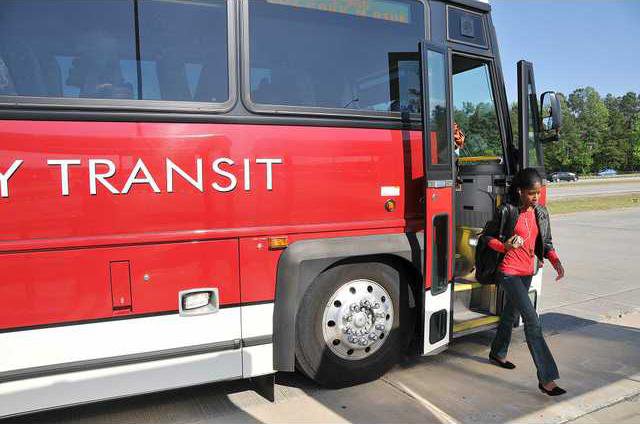An $8 million expansion of the Park & Ride lot at Interstate 985 and Ga. 20 in Buford is part of a larger state plan to improve congestion on Interstate 85 through Gwinnett and DeKalb counties.
William Mecke of Georgia Regional Transportation Authority said 376 new parking spaces are planned at the 335-space lot, with the project completed in June 2011.
Also, “we’ll improve the passenger boarding area and add security cameras and lights,” he said.
Commuters also can expect a new route to Midtown Atlanta starting when the expanded lot is opened, Mecke said.
From the Park & Ride lot, Gwinnett County Transit buses now take commuters to downtown Atlanta destinations, including the state Capitol, each morning starting at 5:40.
The bus service also picks up passengers in Atlanta and brings them back to the lot until 7:40 p.m., according to Gwinnett County Transit’s route schedule.
“Right now, that parking lot is jammed to the gills most days,” Mecke said.
Georgia was awarded a $110 million U.S. Department of Transportation Congestion Reduction Demonstration grant in 2008 to help pay for a test program to reduce congestion through transit improvements, innovative technology and varying toll prices.
As far as transit goes, officials plan to buy 36 new buses to be used along Interstate 85 and build eight new Park & Ride lots, including one at Hamilton Mill Road in North Gwinnett.
One major part of the project is converting high-occupancy vehicle lanes to high-occupancy toll lanes from Chamblee-Tucker Road in DeKalb to Old Peachtree Road in Gwinnett County — a 15-mile stretch.
Program officials completed the environmental certification of the project and have in hand all the proper equipment and technology for the project.
“Now we can move forward with a program that has proved successful in communities such as San Diego, Minneapolis and Miami,” said Gena L. Evans, executive director of the State Road & Tollway Authority.
“We are extremely pleased with the outcome of the tolling technology procurement,” she said. “The technology will be the centerpiece of a tolling program that is safe, seamless, reliable and customer-centered.”
Under the system, commuters traveling alone or with one other person in the designated HOT lanes will have to pay a toll based on the amount of traffic in that lane.
Commuters with two or more passengers will be able to drive at no charge in the lane — as they do now under the HOV system. Nothing changes for them.
“The conversion ... will also benefit current and future users of transit,” said Kirk J. Fjelstal, executive acting director of GRTA.
“Transit buses can make multiple stops at or near a commuter’s destination, not get entangled in highway congestion, and can use the HOT lanes much like an exclusive bus way and that makes them a highly attractive option.”
The new HOT lanes are scheduled to open in summer 2011.

